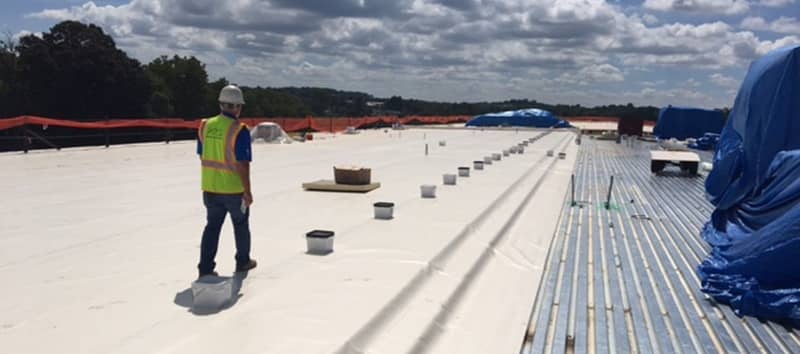 In today’s technologically advanced world, products that are being modified to meet consumers’ wants and needs are becoming widely available at an alarmingly fast rate. This increase in production and modification has affected manufacturing businesses and contractors alike. The rise in roofing products on the market requires manufacturers to set new additions or changes to the specifications of said products, followed by a change in implementation based on these set specifications on the contractor’s behalf. This growth in production has motivated contractors to stay updated on the influx of new manufacturers’ specifications and pre-approvals necessary to carry out an installation or project application.
In today’s technologically advanced world, products that are being modified to meet consumers’ wants and needs are becoming widely available at an alarmingly fast rate. This increase in production and modification has affected manufacturing businesses and contractors alike. The rise in roofing products on the market requires manufacturers to set new additions or changes to the specifications of said products, followed by a change in implementation based on these set specifications on the contractor’s behalf. This growth in production has motivated contractors to stay updated on the influx of new manufacturers’ specifications and pre-approvals necessary to carry out an installation or project application.
At times, it can be difficult to stay informed on the specifications set by manufacturers with today’s fast-paced production environment. However, there are ways to ensure that pertinent information does not fall through the cracks.
“One Size Does Not Fit All”
It is important to keep in mind that although any two given manufacturers may carry the same product, their specifications can be very different. This “one size does not fit all” mentality emphasizes that a certain specification that aligns with one manufacturer may not work for another, although the physical products are the same or extremely similar. Specifications can also differ based on location and product.
Communication Is Crucial
Although staying updated on company websites, addendums and guidelines set in the performance manuals is important, direct communication between the manufacturer and the contractor is vital for specification information. Keeping in touch on a regular basis via phone conversations, email threads or in-person meetings ensures that contractors are receiving approval and therefore successfully carrying out projects according to specific manufacturer specification codes. With the inconsistent specification code changes up to four times a year, direct communication is crucial.
Possible Consequences
Miscommunication between contractors and manufacturers has a trickle-down effect within the industry. Without regular communication, changes or updates to specification codes may not be conveyed to contractors or even the foreman physically carrying out installations in the field.This misstep falls under the responsibilities of the contractor, and can result in not receiving the manufacturer’s approval, along with the loss of time and money. Asking questions and open communication is in every team member’s best interest in most situations.
With today’s rapid-pace production and technology surpassing manuals, addendums and guidelines, remaining informed on manufacturer specifications should be at the top of every contractor’s “to do” list.
What suggestions do you have for staying up to date on manufacturers’ specifications? Let us know in the comments.
-1.png?width=500&height=271&name=FiberTite_Only%20(500px%20wide)-1.png)

-1.png)